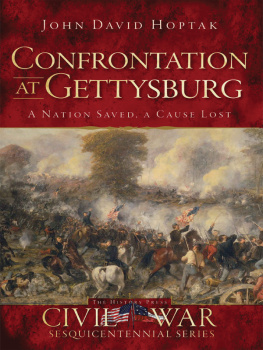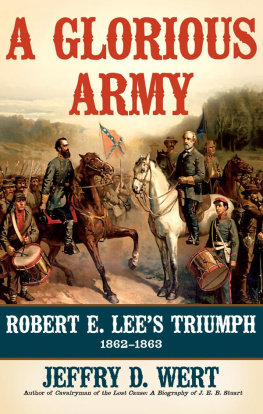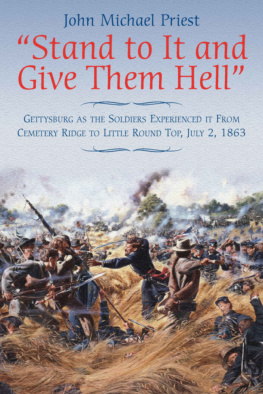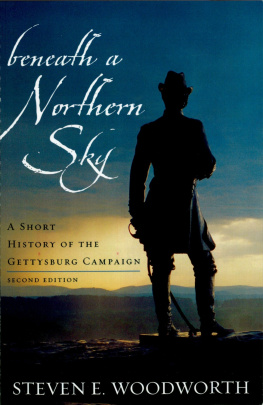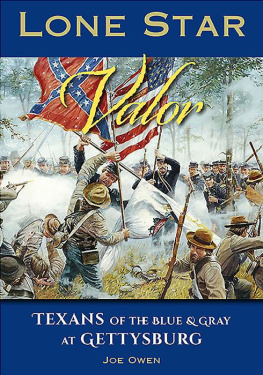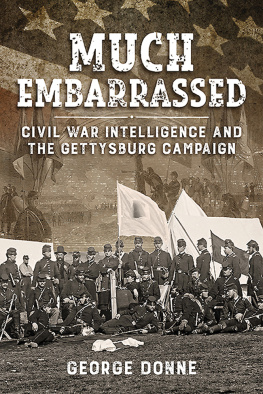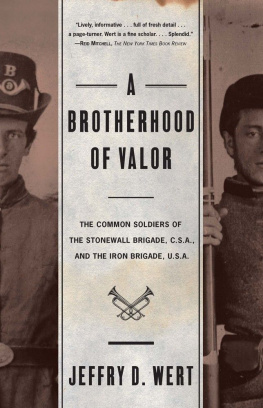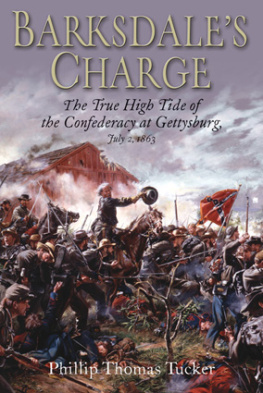
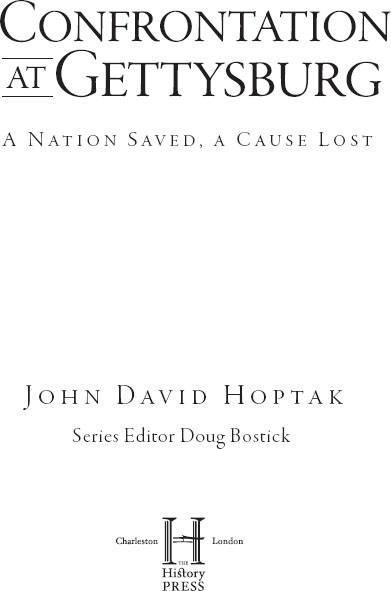
Published by The History Press
Charleston, SC 29403
www.historypress.net
Copyright 2012 by John David Hoptak
All rights reserved
Cover image: Charge of the Pennsylvania Reserves at Plum Run (as seen from the Union side), by Peter Frederick Rothermel. Courtesy of the State Museum of Pennsylvania, Pennsylvania Historical and Museum Commission.
Featuring original, illustrated maps by Mannie Gentile, with additional maps by Hal Jespersen.
First published 2012
e-book edition 2012
Manufactured in the United States
ISBN 978.1.61423.781.5
Library of Congress CIP data applied for.
print ISBN 978.1.60949.426.1
Notice: The information in this book is true and complete to the best of our knowledge. It is offered without guarantee on the part of the author or The History Press. The author and The History Press disclaim all liability in connection with the use of this book.
All rights reserved. No part of this book may be reproduced or transmitted in any form whatsoever without prior written permission from the publisher except in the case of brief quotations embodied in critical articles and reviews.
Dedicated to my family
my mom and dad, Colleen and David Hoptak; my sister, Dr. Angela Hoptak-Solga; and my beautiful wife, Laura
for everything.
Contents
A Note on Sources
Because the sources utilized in the preparation of this volume were so many, it was decided that instead of flooding the narrative with foot or endnotes, the author would present a bibliographical synthesis at the end of each chapter documenting and summarizing those sources that were relied on most heavily. As will be noticed, this book is a synthesis, based largely on the most recent studies of the battlepublished, for the most part, within the past twenty to thirty yearswith all quotes garnered from these works. The hope is that anyone seeking to learn more about the battle, or looking to gain further understanding of any particular aspect of it, will next turn to any or all of the sources provided in each of the chapter notes. Full bibliographic citations for all of these works can be found in the bibliography.
Three works laid the foundation for this entire book. They were Edwin Coddingtons 1968 classic, The Gettysburg Campaign: A Study in Command, which has since gone into many printings and which is still widely regarded as the best single-volume history of the battle; Stephen Searss masterfully written Gettysburg (2003); and Noah Andre Trudeaus equally impressive Gettysburg: A Testing of Courage (2002). Steven Woodworths Beneath a Northern Sky and Craig Symondss American Heritage History of the Battle of Gettysburgtwo smaller but still richly informative volumes that, like this book, sought to synthesize the battlewere also frequently consulted, as were Gettysburg: The Confederate High Tide and Voices of the Civil War: Gettysburg, both published by Time-Life Books in 1985 and 1995, respectively.
A number of guidebooks and atlases were also heavily used, including Gettysburg: A Battlefield Guide by Mark Grimsley and Brooks Simpson (1999), The Complete Gettysburg Guide by J.D. Petruzzi and Steve Stanley (2009) and Brad Gottfrieds The Maps of Gettysburg (2007). Larry Taggs The Generals of Gettysburg provided concise biographical sketches of each of the Union and Confederate brigade, division, corps and army commanders who led troops at Gettysburg and analyses of their roles and actions there, while Brad Gottfrieds companion piece, The Brigades at Gettysburg, was helpful in providing unit histories and the placements of each of the two armies brigades on the battlefield.
Introduction
Addressing Gettysburg
Gettysburg is Americas most famous battle, and for the past 150 years, it has dominated both the history and the memory of the nations greatest tragedy, the Civil War. Indeed, it was not long after the cessation of hostilities that Gettysburg came to assume a central place in how Americans remembered their four-year fratricidal struggle. During the postwar years, with the history of the conflict already fast becoming obscured by hindsight and clouded by nostalgia, the Battle of Gettysburg and its larger campaign became in much popular thought the high-water mark of the Confederacyboth literally, as it was the battle fought farthest north during the course of the war, and figuratively, as many believed that it was there, at Gettysburg, where the Confederacy came closest to achieving victory. And though this thought has tempered some in recent decades, still today many believe that the Battle of Gettysburg was the turning point of the war, when the fortunes of the Confederacy reached their zenith before they began receding.
Fought during the first three days of July 1863, Gettysburg would prove, in terms of numbers engaged, to be one of the largest and, in terms of numbers lost, to be by far the bloodiest battle of the American Civil War. During those three sultry summer days, some 165,000 Americans90,000 in Union blue and 75,000 in Confederate grayslaughtered one another on the gently rolling farm fields and rocky hillsides surrounding the southern Pennsylvania town, and when the smoke cleared over the scarred and bloodied landscape and as the thunderous din of battle drifted away, the results were simply horrific. More than 50,000 mennearly 1 of out of every 3 engagedhad been killed, wounded or captured or went listed as missing in action.
Yet the importance of this great conflagration cannot be measured simply by numbers alone, for the battles significance extended far beyond its grim and ghastly toll. And while the case can certainly be made, convincingly, that Gettysburg was neither the true high-water mark of the Confederacy nor the most important turning point moment of the conflict, there can be no denying that the battle was a critical one, for there was much at stake and a lot riding on its outcome.
In the spring of 1863, in the wake of his most recent victory at Chancellorsville, General Robert E. Lee had led his highly vaunted Army of Northern Virginia on an invasion of the North. He sought to draw the Union Army of the Potomac after him and score yet another victory, only this time on Union soila victory, he hoped, with results more decisive than what had attended his previous battlefield wins in Virginia. The two armies collided at Gettysburg, where for three days the action raged with a hellish intensity, and when it was over, it was instead the Union army that had emerged triumphant and the Confederate army that was soundly defeated. Lee was turned back, his bold gamble having failed. And although the war would continue on for two more long and devastating years following this unimaginable bloodletting, never again would a Confederate army make it that far north, and it may well be argued that the Army of Northern Virginia would never truly recover from the blow it sustained at Gettysburg. As Private Alexander McNeil of the 12th South Carolina wrote just a few days after the battle, We came here the best army the Confederacy ever carried into the field, but thousands of our brave boys are left upon the enemys soil and in my opinion our Army will never be made up such material again.
But perhaps it was Abraham Lincoln who, in just 272 words in a speech that lasted fewer than three minutes, best explained the true importance of the sanguinary struggle at Gettysburg and the purpose of the conflict that had divided the nation and pitted Americans against one another in murderous combat. Four months after the battleon November 19, 1863President Lincoln traveled to Gettysburg to deliver a few appropriate remarks at the dedication of a national soldiers cemetery that had been established there. Before a vast crowd of some fifteen to twenty thousand people, Lincoln began his address with a history lesson, reminding those in attendance that it had been just four score and seven years since the United Statesa new nation, one conceived in liberty and dedicated to the proposition that all men are created equalwas first founded. Yet, just a few generations later, that nation now found itself engaged in a great civil wara war, explained Lincoln, being waged to determine whether such a nation so conceived and so dedicated can long endure.
Next page
